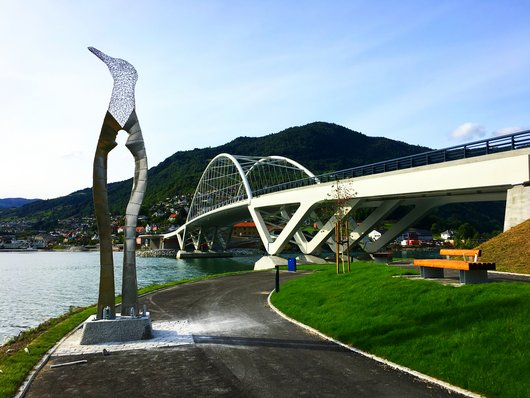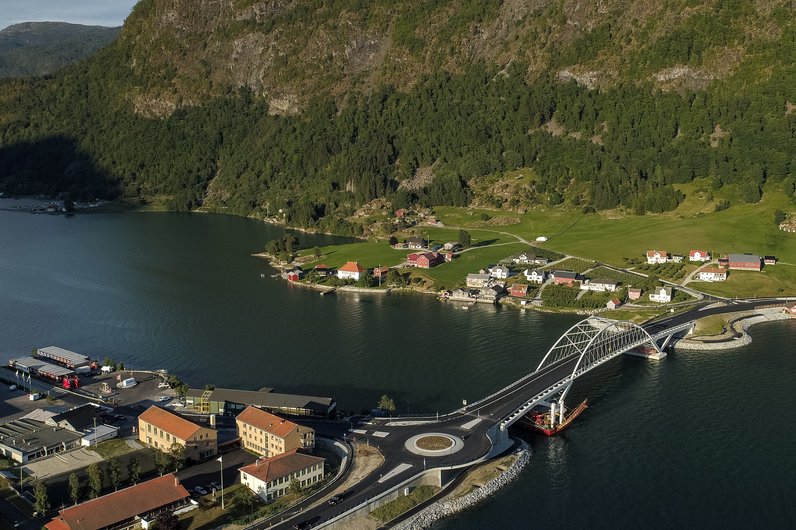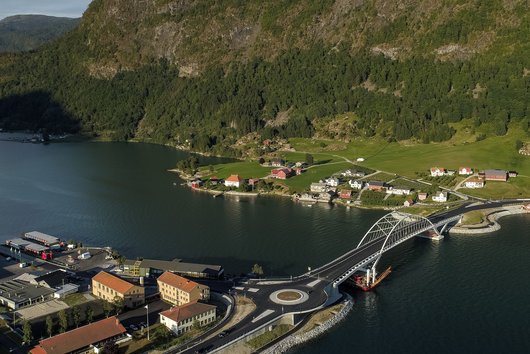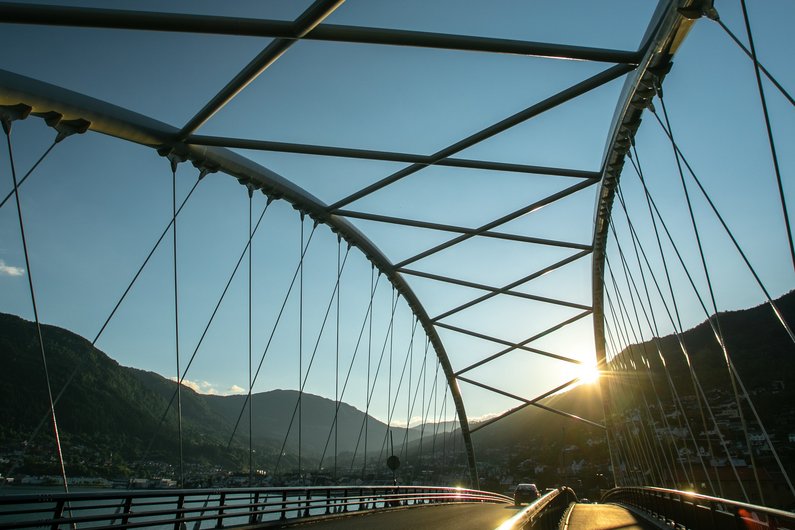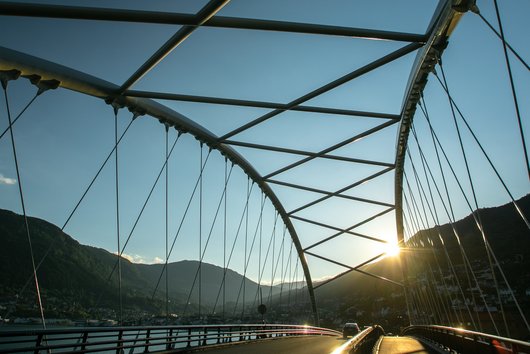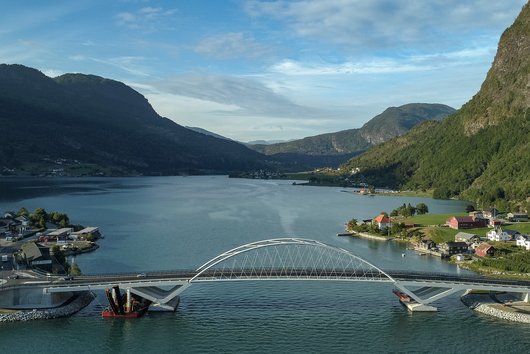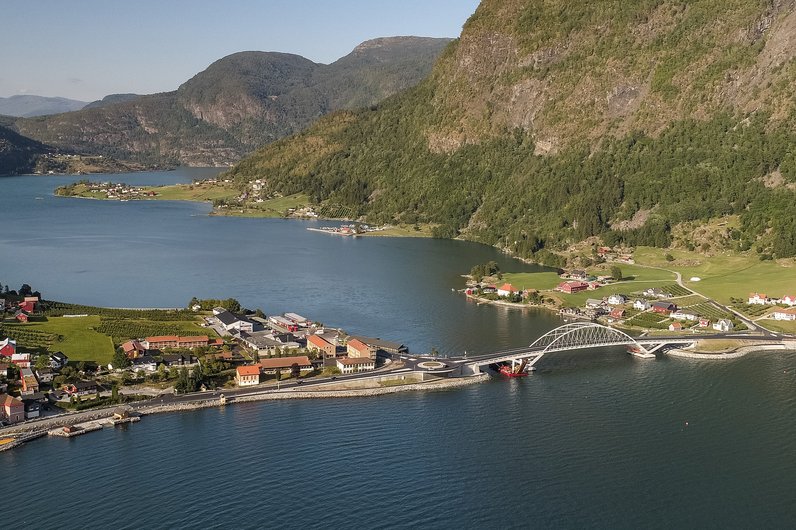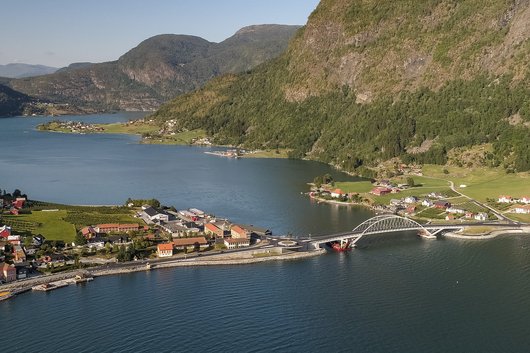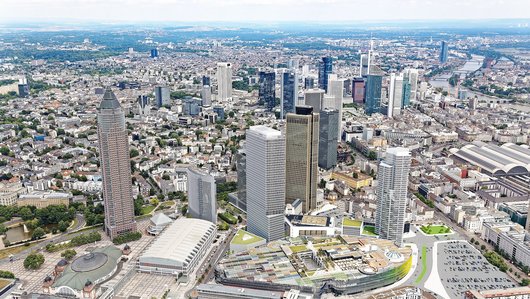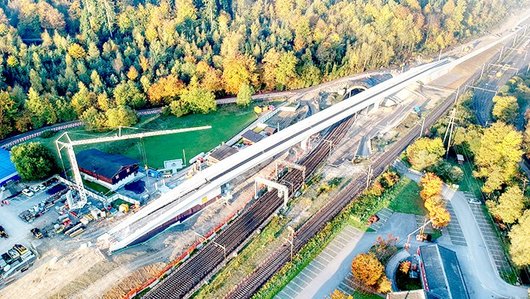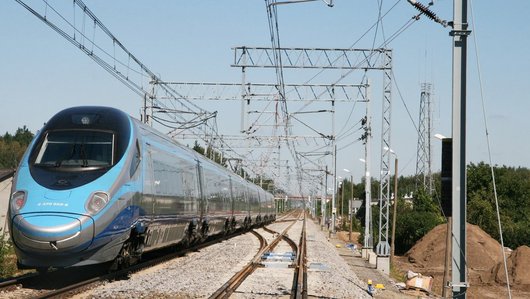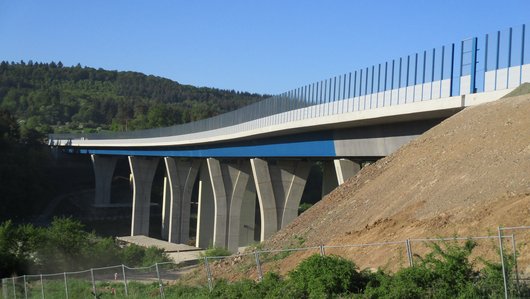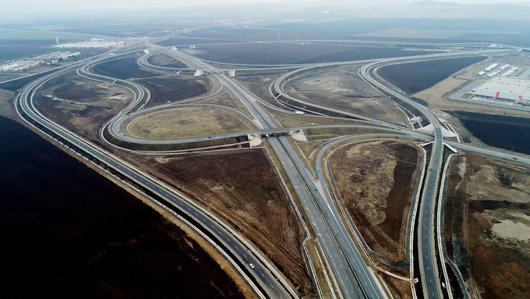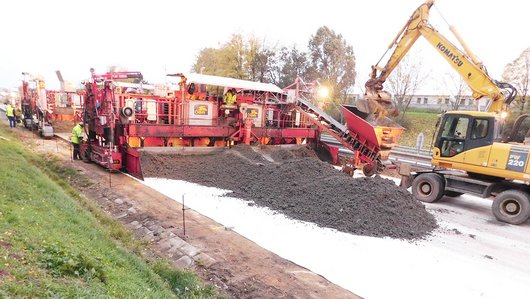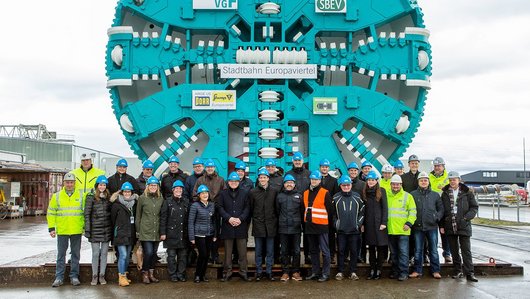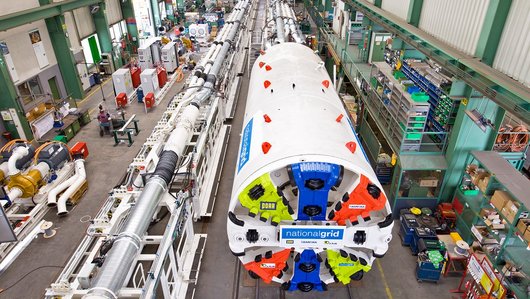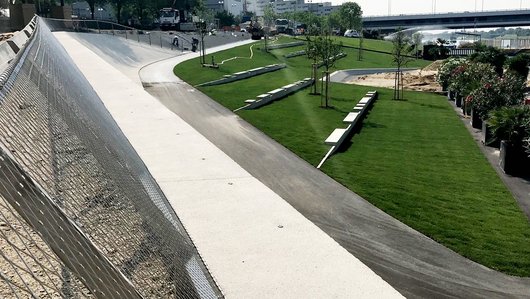of the Norwegian fjords
The Loftesnes Bridge
With the construction of the Loftesnes Bridge, which won a European Steel Bridge Award, the PORR subsidiary PNC has realised an important project in Norway.
The contract also included the construction of a roundabout, several footpaths and cycle lanes, and the demolition of the old bridge. In order to ensure a continuous flow of traffic, the dismantling and new construction had to be precisely coordinated.
-
EmployerStatens Vegvessen Region Vest
-
ContractorJoint Venture: PNC Norge AS und K.A. Aurstad AS
-
ArchitectÅF Consult
-
Order typeMain contractor
-
Project typeCivil engineering/infrastructure, Bridge construction
-
Project scopeNew construction of bridge, roundabout and retaining wall, as well as removal of the old bridge
-
Order volume238 million Norwegian kroner (25 million euros)
-
Construction start12/2015
-
Construction end07/2018
Background
For 60 years, the Loftesnes Bridge has crossed a branch of the Sognefjord, Norway's longest fjord. As the bridge no longer met today’s technical requirements, the Norwegian road administration, Statens Vegvessen Region Vest, decided to demolish the old bridge and replace it with a new construction. The contract for the erection of a 194m steel bridge was awarded in November 2015 to a joint venture between PNC Norge (65%) and K.A. Aurstad (35%). In addition to the construction of the bridge itself, the contract also included the demolition of the old Loftesnes Bridge, the construction of a retaining wall, a roundabout, several footpaths and cycle lanes, as well as rest areas and car parks in the immediate vicinity of the bridge.
The criterion for the award of the contract was the lowest price. We were able to add the best quality to that.
Old next to new
The new bridge was constructed in just under two and a half years, directly alongside the old Loftesnes Bridge, which had to be kept open to traffic until completion. The spatial proximity of the two structures combined with difficult ground conditions made constructing the bridge’s foundations a real challenge. Ground movements and earth tremors had to be closely monitored in order to avoid negative effects on the old bridge while 28 tubular steel piles were driven into the fjord bed to serve as supports for the main foundations.
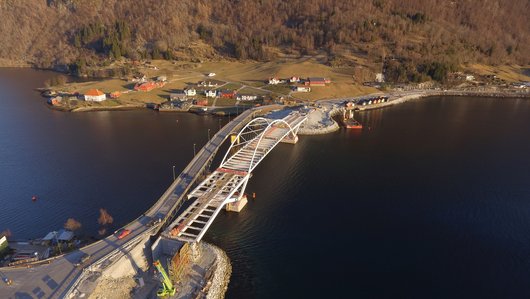

By August 2016, two main foundations had been constructed, each with 14 piles. The piles were driven by a barge-mounted pile driver. A total length of almost 1,500m of piles were sunk into the sea, reinforced and cast on site. The longest pile was over 70m long. After the pile work, the construction of the pile caps and two abutments at each end of the bridge could begin. During this time, the steel structure for the bridge, consisting of three sections and weighing almost 1,300 tonnes, was manufactured in Poland. At the end of January, after the pile caps and abutments had been completed, all three steel sections were loaded onto two barges, secured and shipped to Norway, where they arrived five days and 765 nautical miles later.
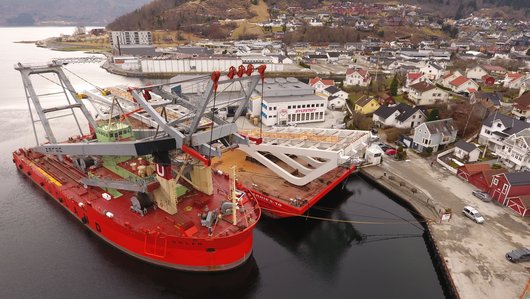

Assembly by floating crane
The arrival of the steel structure and the subsequent assembly of the bridge marked the start of the most exciting phase of the project, which was also watched with great interest by the locals. Residents and onlookers gathered on the quay where the steel structure was delivered to follow the construction process. PNC had precisely planned each step of the actual assembly in advance and created a detailed schedule.
A floating crane with a load capacity of 800 tonnes was used to assemble the three bridge sections. By 31 January, the first steel structure, weighing 470 tonnes, was suspended from the crane and assembled in its final position. Just four days later, the other two parts were also in place. The installation of one section very close to the old bridge necessitated its closure to traffic for a short time for safety reasons.
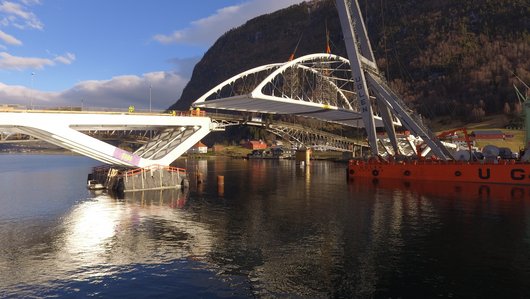

Dismantling and new construction in parallel
Before the old Loftesnes bridge could be dismantled, traffic had to be switched to the new bridge within a timeframe specified by the client. This meant that the roundabout had to be constructed and all surfacing works completed. PNC made every effort to meet this deadline, since each day of delay would have resulted in a substantial penalty.
Intensive work on the completion of the bridge deck was carried out during the summer of 2017, in order to take advantage of the good weather conditions for insulation and asphalting works. The insulation layer was applied to the bridge deck and the roundabout at the end of September 2017, followed two weeks later by the asphalt. The bridge was opened to traffic on 29 November, one day before deadline.
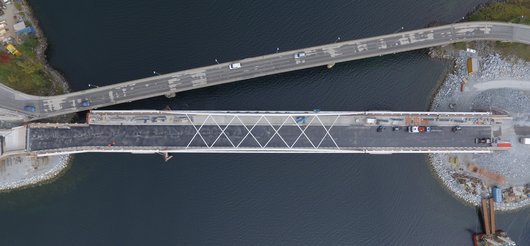

The new bridge consists of a three-part steel structure, which was assembled using an 800 tonne floating crane.
Work to dismantle the old bridge began immediately afterwards, using heavy lifting equipment to divide it into three sections that were brought ashore on a barge. Then the construction materials were separated and prepared for recycling. The piles sunk in the fjord were cut by a team of divers. The entire dismantling process took around one and a half months.
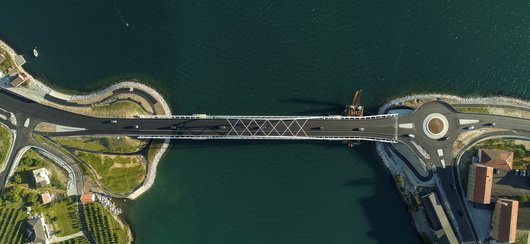

Technical data
-
Piles driven28 piles, ⌀ 1220mm, max. length 70m
-
Steel incorporated1.250t
-
Concrete incorporated6.600m³
-
Tie cables72 fully locked cables, ⌀ 45mm
Successful handover and award
After the old bridge had been dismantled, the last phase of the project started. The remaining parts of the abutment, steel structure and bridge deck could now be finished. The welding of the steel structure and the application of corrosion protection to it were both performed on site. While PNC put the finishing touches to the bridge works, the joint venture partner K.A. Aurstad took care of the planting, finishing the footpaths and cycle paths, and the electrical installations. After a successful inspection, the bridge was handed over to the client in July 2018. The project’s crowning achievement was winning the ECCS Public Award in the “European Award for Steel Structures" competition.
